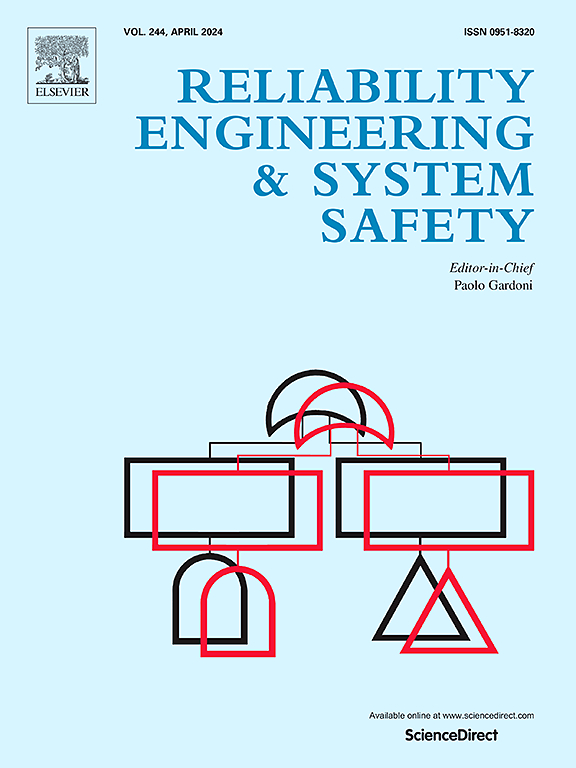A fire navigation model: Considering travel time, impact of fire, and congestion severity
IF 9.4
1区 工程技术
Q1 ENGINEERING, INDUSTRIAL
引用次数: 0
Abstract
The navigation model presented integrates Fire Dynamics Simulation (FDS), a navigation graph generation model, a modified Dijkstra algorithm, Agent-Based Simulation (ABS), and Intelligent Active Dynamic Signage System (IADSS). The FDS evaluates fire impacts on paths’ safety, while ABS captures evacuees’ interactions and congestion. The modified Dijkstra algorithm identifies optimal paths, considering travel time, fire impacts, and crowd density. The IADSS dynamically communicates these paths to evacuees. The contributions include (1) integrating the combined effects of heat and toxic gases on evacuees with congestion and travel time into an evacuation framework, (2) introducing algorithms for integrating signage systems into buildings’ navigation graph, (3) determining recommended and negated signage directions, (4) proposing a central server that updates the signage directions concerning real-time buildings’ conditions and congestion, and (5) developing a tool for minimizing evacuation time, congestion, and fire impacts. Case studies across diverse fire scenarios and building types showcase the framework's adaptability. Results indicate significant improvements over traditional methods, including reduced evacuation time, congestion severity, and cumulative fire impacts. Furthermore, the model computational efficiency enables time-sensitive fire evacuation planning. A validation study comparing it with two established methodologies highlights its superior signage direction determination, heightened evacuation performance, and enhanced output richness.
求助全文
约1分钟内获得全文
求助全文
来源期刊

Reliability Engineering & System Safety
管理科学-工程:工业
CiteScore
15.20
自引率
39.50%
发文量
621
审稿时长
67 days
期刊介绍:
Elsevier publishes Reliability Engineering & System Safety in association with the European Safety and Reliability Association and the Safety Engineering and Risk Analysis Division. The international journal is devoted to developing and applying methods to enhance the safety and reliability of complex technological systems, like nuclear power plants, chemical plants, hazardous waste facilities, space systems, offshore and maritime systems, transportation systems, constructed infrastructure, and manufacturing plants. The journal normally publishes only articles that involve the analysis of substantive problems related to the reliability of complex systems or present techniques and/or theoretical results that have a discernable relationship to the solution of such problems. An important aim is to balance academic material and practical applications.
 求助内容:
求助内容: 应助结果提醒方式:
应助结果提醒方式:


